The Transat: Heading South to Get West
Published on May 3rd, 2016
(May 3, 2016; Day 2) – After their first night at sea the 25 boats in The Transat bakerly solo transatlantic race from Plymouth to New York are spread out over 100 miles of ocean, with the leaders now well into the Bay of Biscay.
At the head of the fleet the three-strong Ultime class are powering their way southwards towards the northwest tip of Spain, looking to benefit from downwind conditions that could propel them west towards America.
Fourteen hours into the race, the overall lead was being disputed by Thomas Coville on Sodebo and Francois Gabart on Macif who were just a couple of miles apart and romping along at over 20 knots of boatspeed.
With only one exception all the skippers in each of the four classes – Ultimes, IMOCA 60s, Multi50s and Class40s – are favouring a southern route in the early stages that will take them towards Cape Finisterre and then further south before they begin heading west.
Most skippers will have had just a few minutes sleep as they recover from the challenges of the start and then the early stages, racing in close company with other boats and having to deal with the French Brittany coast and its commercial traffic.
Speaking on the satellite phone from on board Sodebo early this morning, Coville was in good spirits and said he had no doubt that south was the best option in a race more usually associated with the shorter, but more brutal, northern route.
“In fact, in recent days, we see that the southern route is somewhat less exposed than the northern route,” said the Sodebo skipper. “With the north affected by the ice gate (an exclusion zone imposed by the race director to ensure competitors avoid icebergs) which will force people to turn south, this southern route has advantages.”
Looking back on the start on Monday afternoon in Plymouth Sound, Coville said it had been a tricky getaway close to the breakwater and during the passage of a weather front. “We had to make the right sail choice before leaving and there was lots to think about – I did not want to take too much risk; I wanted to do it properly,” he said.
“Francois (Gabart) was a little early on the startline and had to bear away and then we were next to each other just like a classic race – it was magical. He gradually pulled away but it was nothing dramatic,” added Coville. The two giant trimarans raced on in sight of each other into Monday evening until they lost touch passing the island of Ushant off the French coast.
Behind the Ultimes, the leaders in the IMOCA 60 class are tightly-bunched in the north Biscay sailing downwind and making around 12 knots of boatspeed. The leading boats are both fitted with foils – Armel le Cléac’h’s Banque Populaire and Sébastien Josse’s Edmond de Rothschild – and are only six miles apart. The first of the non-foilers in the leading bunch is Vincent Riou’s PRB which is 15 miles behind Josse.
In the five-strong Multi50 class, Pierre Antoine on board Olmix has decided to go it alone on a westerly heading, giving him the class lead at this stage, while his rivals head south. In that group Lalou Roucayrol on board Arkema is ahead, just over 10 miles to the good of Erwan Le Roux on Fenetrea-Cardinal.
Further north and still just south of Ushant, the 10-strong Class40 fleet are enjoying close racing with the lead being disputed by Britain’s Phil Sharp on Imerys and his French rival Maxime Sorel on V&B.
Sorel said he had seen 35 knots of wind overnight but conditions were moderating. He joked that he was following the same course as he had taken in the Route du Rhum in 2014 – a predominantly downwind race – as he surfed before a fresh northerly wind, even though it is a bit colder and wetter this time.
“The sea has calmed down a bit compared with the beginning of night,” he said. “All is well on board at this time but I have a couple of hours ahead when conditions will not be easy but then it should settle again. I haven’t eaten too much but I have been drinking lots and managed to get some rest.”
At the back of the fleet, meanwhile, Loick Peyron on board the 1960s-vintage 44ft ketch Pen Duick II is ploughing a lonely furrow due south of the Isles of Scilly. Peyron is taking on The Transat bakerly outside the main race in a tribute to the great French offshore sailor Eric Tabarly who won this race in 1964 on board Pen Duick II.
This morning Peyron was making just over five knots and heading west – for him the option of sailing fast to warmer weather south of the Biscay is not an option.
UPDATE:
♦ At 09h59 BST, The Transat bakerly Race Control received a call from the skipper Maxime Sorel aboard the Class40 VandB. He had a serious collision with a cargo ship and is withdrawing. Full report.
♦ At around 1900hrs GMT+2, Erwan Le Roux, the skipper of FenêtréA Cardinal, sustained substantial damage to the port float on his Multi50 trimaran. Erwan was leading the Multi50 fleet when the incident occurred, sailing downwind in a northeasterly 25-27 knots, and was approximately sixty miles off Cape Finisterre. He managed to secure his boat and is now in regular contact with his weather man to find the best landing point between Portugal and Spain, and is sailing at a reduced speed on a heading of 135°.
Positions as of 0400 (GMT+1)
Ultimes
1. Yves Le Blevec (Actual) – 2908nm to the finish
2. Thomas Coville (Sodebo) – 2nm behind the leader
3. François Gabart (Macif) – 2.18nm behind the leader
IMOCA
1. Armel Le Cléac’h (Banque Populaire) – 2938nm from the finish
2. Sébastien Josse (Edmond de Rothschild) – 6.52nm behind the leader
3. Richard Tolkien (44) – 21nm behind the leader
MULTI50
1. Pierre Antoine (Olmix) – 2922nm to the finish
2. Lalou Roucayrol (Arkema) – 25nm behind the leader
3. Erwan Le Roux (FenetréA Cardinal) – 36nm behind the leader
CLASS40
1. Phil Sharp (Phil Sharp Racing) – 2979nm to the finish
2. Maxime Sorel (V&B) – 1.40nm behind the leader
3. Edouard Golbery (Région Normandie) – 11.96nm behind the leader
Own course:
Loïck Peyron (Pen Duick II) – 2972nm to the finish
Event website – Tracker – Facebook
About The Transat
The OSTAR (Observer Singlehanded Trans-Atlantic Race) was created in 1960 by a handful of pioneering sailors. The race was organised every four years by the Royal Western Yacht Club (RWYC) from 1960 through to the 2000 event, albeit with a lot of involvement from the French event organiser Pen Duick in the 90s, in order to cater for the demands of the professional campaigns that dominated the event.
After the 2000 edition, OC Sport stepped in to develop the event and acquired the rights to the professional part. OC Sport organised The Transat in 2004 and 2008, the 2012 edition was deferred at the request of IMOCA (the largest competing class).
The RWYC continues to organise a solo transatlantic race for Corinthian and non-professional sailors that is still known as the (O)STAR,. This race usually falls a year after the professional big boat race i.e. 2005, 2009, 2013, 2017. Both the amateur Yacht Club event and The Transat have the right to link to the history of the original race created in 1960, and to the rich history it has produced.
The first race was competed by just a handful of pioneering sailors including Francis Chichester and Blondie Hasler who coined the phrase: “One man, one boat, the ocean.” There has been tragedy, dramatic rescues and exceptional drama since the race began in 1960. Over time The Transat, as it is known today, has evolved and now serves the professional end of offshore sailing. But there are few modern day races that can reflect on such a long and outstanding history.
Monohull IMOCA 60 record: 12 days, 11 hours and 45 minutes set by Loick Peyron (FRA) on board Gitana in 2008. Multihull 60ft record: 8 days, 8 hours, 29 minutes set by Michel Desjoyeaux (FRA) on board Géant in 2004.
Source: The Transat




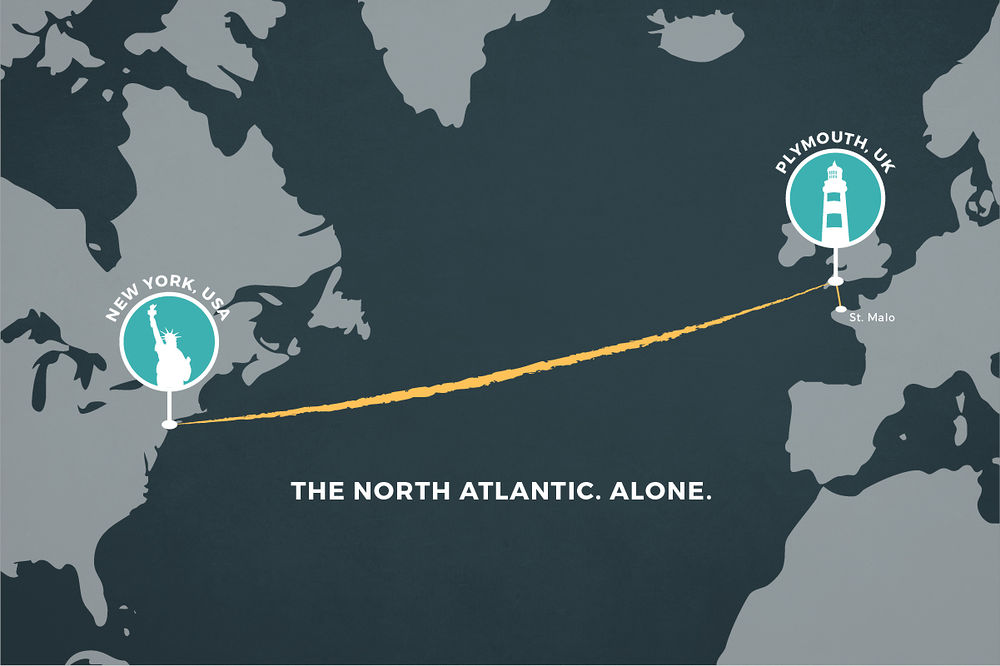

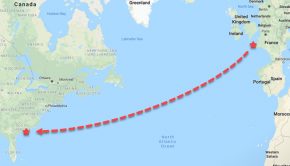
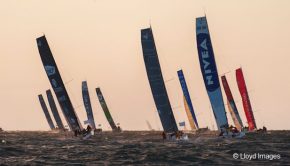
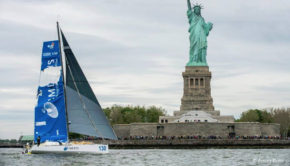
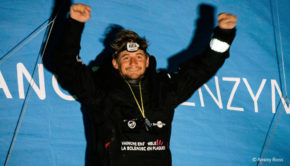
 We’ll keep your information safe.
We’ll keep your information safe.